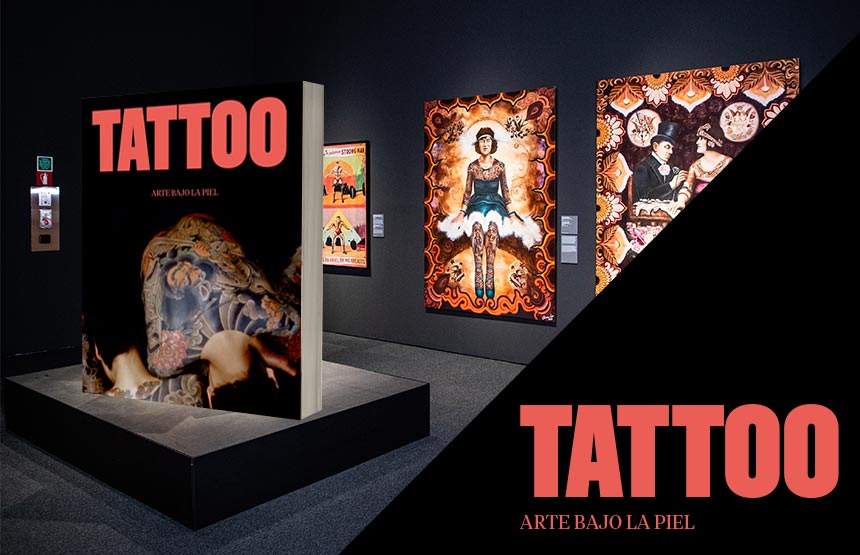The exhibition Tattoo – Arte Bajo la Piel will run at the Caixa Forum in Madrid from 2 December until 17 April 2022.
From Paris to Madrid
First shown by the Musée du Quai Branly in 2014 under the title Tatoueurs tatoués, the Arte Bajo la Piel exhibition is coming to the Spanish capital for four months. With more than 240 pieces – drawings, paintings, tattooed silicone models, tattoo tools, photographs, etc. – from all over the world, it offers a complete panorama of the history of tattooing, its uses and its contemporary resurgence.
Two new photographs in the Japan section
With each new tour, the exhibition is enriched by new pieces. In Madrid, two photographs by Akimitsu Takagi join the Japan section. Taken from the Japanese writer’s photographic collection, these two images are iconic. On the one hand, they show the members of an old tattoo club. On the other, a tattooist working with an electric tattoo machine.These photographs shed new light on the history of tattooing in 20th-century Japan, particularly in the 1950s.
The oldest tattoo club in the world
The first photograph, taken around 1955, shows tattooed members of the Edo Chōyūkai club. Still in operation, this club is perhaps the oldest of its kind in the world. The image was taken at a gathering in a public park in Tokyo. Several tattooed men and women can be seen posing under a waterfall. The ritual is reminiscent of takigyō – an ancient practice aimed at purifying the heart and soul. Created at the beginning of the 20th century, the club claims to preserve the spirit of tattooing as it was done in the old days, during the Edo period. In those days, the practice was the pride and joy of various trades (carpenters, craftsmen, firemen).
A historic family
The second photograph shows tattooist Horigorō II. Photographed at work, we see him reproducing on his client’s back a print by the artist Tsukioka Yoshitoshi (1839-1892) depicting the divinity Fudō Myōō. Contrary to the usual practice in traditional tattooing, Horigorō II does not work by hand using the tebori technique. Instead, he uses a Western-inspired electric tattoo machine (patented in New York by Samuel O’Reilly in 1892). The tattooer is said to have learned the technique from his father, who was also a tattooer. Over the course of his career, he is said to have converted to this more modern, faster and more precise tool. The Horigorō family claim to be the first in the history of Japanese art to have adopted the technique. The image taken by Takagi thus questions the temporality of the introduction of this modern instrument and its appropriation by the profession in the archipelago.
See the photographs taken by Akimitsu Takagi in the book the tattoo writer.

